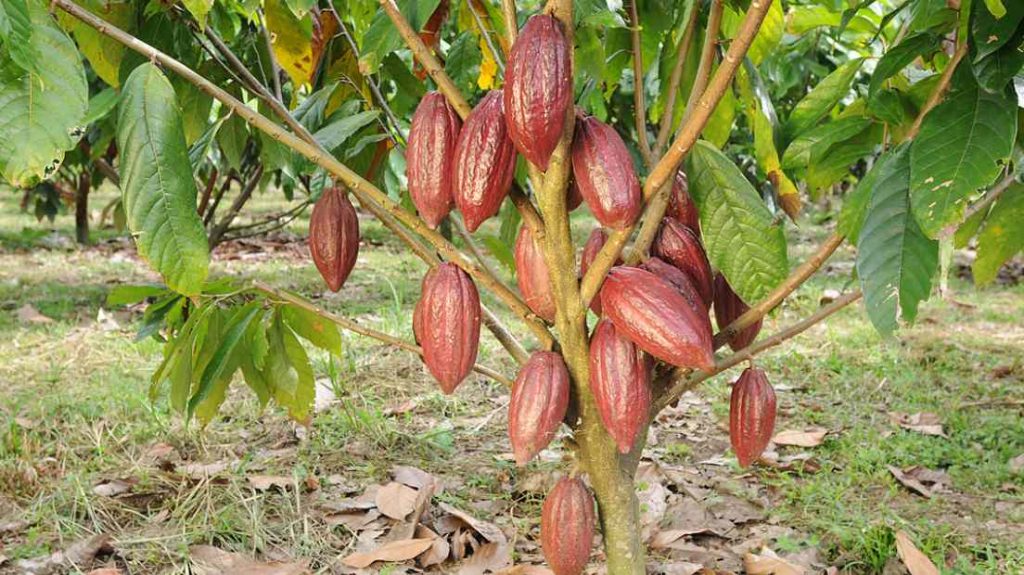Beyond Cannabis: Other plants that produce cannabinoids
Not only the Cannabis plant can produce cannabinoids, surprisingly there are other plants that produce cannabinoids. Today’s article will address this topic by explaining what cannabinoids can be produced in other plants and showing examples of plant species that are capable of producing this compounds that are so interesting nowadays.
The plants, fungi and trees that will be discussed in this article are also capable of producing compounds very similar to cannabinoids that act by regulating certain mechanisms in the body, as will be discussed below. But first, it is necessary to start by putting the subject in context.
What are cannabinoids?
Cannabinoids are natural compounds found in different plant species, most commonly in Cannabis Sativa. Of the more than 500 different compounds present in a plant, only about 66 are classified as cannabinoids.
The best known of these cannabinoids is delta-9-tetrahydrocannabinol (Δ9-THC), which is the main psychoactive ingredient in the cannabis plant. Also, cannabidiol (CBD) is another important component, which makes up approximately 40 per cent of the plant’s resin extract.
The cannabinoids found naturally in plants are called phytocannabinoids. Cannabinoids can also be produced by the human body, known as endocannabinoids, which are an essential component of our body’s endocannabinoid system. This article will explore the possibility that there are other plants that produce cannabinoids.
The endocannabinoid system (ECS) is largely responsible for maintaining the body’s internal balance. Phytocannabinoids, or cannabinoids produced by the cannabis plant, mimic the functions of our endocannabinoids and are responsible for the psychoactive effects associated with THC.
Pain, stress, appetite and sleep are just some of the body functions that cannabinoids can rule by acting on the endocannabinoid system. The potential health benefits of cannabinoids are numerous and include reducing inflammation, pain and controlling nausea.
Traditionally, it has been believed that there are only two receptors that interact with endocannabinoids and phytocannabinoids, the CB1 and CB2 receptors. However, new scientific research points to the possibility of the existence of other cannabinoid receptors that may interact with other cannabinoid-producing plants.
Are there other cannabinoid-producing plants?
Historically, cannabinoids were thought to be exclusive to marijuana. However, this is not true, and there are other plant species that are capable of producing compounds that are very similar to cannabinoids. Thus, these compounds are also capable of interacting with and influencing the endocannabinoid system in much the same way.
Echinacea
Echinacea is a plant species that has been used in traditional medicine for centuries. Echinacea does not contain cannabinoids per se, but contains very similar compounds known as cannabimimetics. These are compounds that also have the ability to interact with the endocannabinoid system of living beings.
In the case of echinacea, they contain the compound N-alkylamides, which are able to interact with the CB2 receptors of the endocannabinoid system. One study outlines the possibility that these compounds, which mimic the structure of cannabinoids, may produce anti-inflammatory effects similar to those of anandamide.
Sunflowers
The sunflower is one such species capable of generating cannabinoid-like compounds, and can therefore be classified within the group of other cannabinoid-producing plants. Among all the varieties of sunflowers that can be found in the world, only the genus Helichrysum, made up of more than 600 different varieties of sunflowers, is capable of generating a compound very similar to CBG.

CBG is a cannabinoid known as cannabigerol and is currently being studied for its potential pharmacological properties, but has not been the subject of any clinical trials. CBG is the precursor of CBD, CBC and THC. CBGA (the acidic, inactive form of CBG) changes, breaks down and becomes the base molecule from which other cannabinoids are formed, including THC, CBD and CBC.
Black pepper
Something so common and present in every kitchen could belong to the group of other plants that produce cannabinoids. Black pepper is a domestic spice whose origins are said by many to be in southern India. In addition to this, this spice is known to contain caryophyllene, which is not a cannabinoid, but a terpene that can also be found in marijuana plants.
Also called beta-caryophyllene or BCP, this terpene can be found in aromatic oils such as rosemary oil and clove oil, and in nature is most commonly found in hops, cloves, black pepper, oregano, cinnamon and basil, and is responsible for the pungent aroma in certain spices.
Black truffle
Continuing with the review of other plants that produce cannabinoids, we come across the black truffle, which, although it is not a plant but a fungus, it has the capacity to generate compounds that interact with the endocannabinoid system. In this case, the black truffle produces anandamide, the first endocannabinoid ever discovered, so the body has the ability to create it itself.
The word “anandamide” originates from the Sanskrit “ananda”, which roughly translates as “happiness” or “joy”, indicating the mood-enhancing properties this cannabinoid can have.
Also called N-arachidonoylethanolamine (AEA), anandamide interacts with receptors in the body’s endocannabinoid system similarly to cannabinoids such as THC. It is a neurotransmitter and cannabinoid receptor binding agent that functions as a signalling messenger for CB receptors located in the body.
Cocoa
The Cocoa tree is native to the Amazon, and is the main ingredient in chocolate. It belongs to a group of other plants that produce cannabinoids. In the case of cocoa, it can produce N-acylethanolamines.

N-acylethanolamines (NAE) are bioactive lipids, structural analogues of the endocannabinoid arachidonylethanolamide (anandamide), whose functions and properties are being elucidated in recent years. By activating CB receptors, these molecules exert a number of physiological effects and therefore act in a very similar way to endo- and phytocannabinoids and can increase anandamide activity in the body.
Toothwort
Toothwort, also known as Acmella oleracea, is a strain originating from Brazil that is in the group of other cannabinoid-producing plants. It is a popular strain because of the numbing effect it can have once chewed, producing a sensation similar to a sparkling on the tongue.
This effect is enhanced by a compound known as N-isobutylamides, which Acmella produces in the flower stalks. This bioactive compound has been commonly used in traditional Brazilian medicine to alleviate stomach upset, and it is another compound with the ability to interact with the endocannabinoid system.
Kava
Although it can be lumped in with other cannabinoid-producing plants, Kava is not a plant per se, but an extract from a plant native to the Pacific Islands known as Piper methysticum. In this region of the world, Kava has traditionally been used as a social drink, as it is believed to promote sedative feelings when consumed.
One of the key components of Kava is yangonin, which has the ability to interact with the CB1 receptors of the endocannabinoid system. Early studies on Kava showed that this compound was effective as an antidepressant and even as a tranquillizer against anxiety.
However, in 2003, 11 cases of liver failure related to kava use were reported, including seven patients requiring liver transplantation and four deaths. In January 2003, kava was banned in the EU and Canada, and the FDA issued another warning.
Azalea
Azalea, or rhododendron, is a plant native to southern China, and like other species on the list of other plants that produce cannabinoids, it is used to make an extract that fights bacterial diseases. It is a strain that can produce folic acids, which are very similar in structure to cannabinoids. It also has the ability to produce flavonoids, terpenes and tannins.
Planta del té
Tea plants need no introduction. Tea has been used throughout history as a stimulant because of the presence of theine, but they also belong to the vast group of other plants that produce cannabinoids, having the ability to produce catechins.
Catechins are not cannabinoids, but are flavonoids, also present in marijuana and with the capacity to interfere in the bodily functions of the organism of living beings.

In short, there are a large number of plant species with the presence of cannabinoids or compounds known as cannabimimetics, which are capable of interacting with the organism of living beings through what is known as the endocannabinoid system.
Only the future and scientific research will be able to expand this list of other cannabinoid-producing plants. In the meantime, continue the reading with interesting topics such as CBDP: Un nuevo cannabinoide que plantea nuevas posibilidades y Trichome Research Initiative y el envejecimiento de la resina de marihuana.
Licenciado en Biología Molecular, gestor de contenidos y responsable de tienda en Experiencia Natural. Viviendo la vida, hablando de Cannabis Sativa, padre. Número de colegiado es 20787-X.










